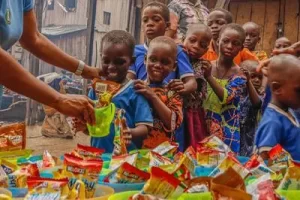Feeding Scheme in South Africa

Due to poverty, food insecurity and poor access to nutritious food .Currently, in South Africa, about one in four children are malnourished. A feeding scheme is a crucial way to provide nutritious meals to various children in need, and can make a change in their lives. In order to start a feeding Scheme, you need to consider the following. Firstly, identify a group of children who will benefit from the scheme. This could be children in a particular area, or those who attend a certain school. After identifying, the potential beneficiaries, you need to find a way to fund the scheme. This could be through donations, sponsorships or government funding.
Once necessary funding is obtained, you need to decide on a menu and find a kitchen or catering company who can prepare the meals. The meals need to be nutritious and balanced, and you may need to consult with a dietician to ensure this. Finally, you need to arrange for the meals to be delivered to the children. This could be done through a school or community Centre. Initiating, a feeding scheme could be tasking at first, but it is a rewarding way to make a difference in the lives of children in need.
What does it cost to run a feeding scheme in South Africa?
In South Africa, it cost a rough estimate would be that it would cost around R50 000 (US$3,500) per month to run a small feeding scheme in a rural area of South Africa, feeding around 200 people.
What food are commonly eaten in South Africa?
In South Africa, there are various types of food. However, the following are the most common foods types:
- Biltong & droewors. Dry curing was a method used to preserve meat by the indigenous tribes of South Africa before fridges were invented.
- Cape Malay curry.
- Malva pudding.
- Chakalaka & pap.
- Braai/Shisa nyama.
- Bunny chow.
- Amarula Don Pedro.
How many kids go to school hungry in South Africa?
According to the University of Cape Town’s Children’s Institute, from 2020, data indicated that about four million children in South Africa had stunted growth because of malnutrition and another 10 million went hungry every day, which is a very serious issue for development in South Africa.
What are the challenges of school feeding programme in South Africa?
The major challenges are; shortage of water, food insecurity, inaccessibility, insecurity and harsh climatic conditions, and finally, the program funding.
Share This





